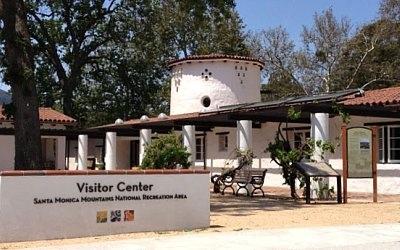Since its inception in 1916, the National Park Service (NPS) has been charged with protecting our country’s national parks for generations to come. Since the push to “go green” has become an increasing part of public consciousness in recent years, so too has the NPS expanded its efforts in that arena. From locally produced food served in park restaurants to cutting edge energy conservation, the NPS has many sustainable practices in place.
Now, the NPS has gained its first “net zero” visitor center, the Anthony C. Beilenson Visitor Center at the King Gillette Ranch in the Santa Monica Mountains National Recreation Area in California. Check out these other National Park Service green buildings—
http://www.nps.gov/sustainability/documents/sustainable/LEED-Buildings-T...
The visitor center has been awarded a LEED (Leadership in Energy and Environmental Design) Platinum certification (the highest) for its design. LEED provides building owners and operators with a framework for identifying and implementing practical and measurable green building design, construction, operations and maintenance solutions. In addition to this building, the NPS has several other LEED certified buildings.
The King Gillette visitor center is “net zero site energy,” meaning it produces and exports at least as much renewable energy as the total energy it imports and uses in a year. The building boasts a mix of both new technology and older insights into green building: photovoltaic panels, LED lighting, geothermal heating and cooling, as well as a use of natural light and green building materials. The visitor center’s energy production and consumption can be monitored online.
The Anthony C. Beilenson Visitor Center is in alignment with the Park Service’s green parks plan, which encourages units of the park system to reduce carbon emissions and use sustainable management. Kate Kuykendall, a NPS spokesperson, said, “It’s really about walking the walk since our entire agency is about protecting national resources.”
Located in northwest Los Angeles, the Santa Monica Mountains National Recreation Area is the largest urban national park in the United States. The area has a long history of human occupation and contains many significant historic and prehistoric sites and a Native American history. The national recreation area actually is made up of many parks and locations, from the beaches of Malibu to the peaks of the mountain range and is only a hop, skip, and jump from Los Angeles, making it the perfect location for a family vacation or a quick outing on a business trip.




Comments
Anon 2:25 -
I can't speak to the "need" for this facility as this is not an area I visit. But the $9.5 mil price tag (source?) does indeed seem quite excessive if all it covered was the building. That's $1600 a square foot or nearly 10x (1000 percent) higher than typical building costs. Sure seems like alot of facilities could have been repaired/built for $9.5 million.
Here is what I found out in going Leed in attempting to build a small building (2400 sq ft) for a governmental agency. It was going to cost us additional 10,000 to get 2x4 studs certified as "non old growth" lumber. it was going to cost about another 10K to go throught the LEED certification overhead that benefitted no one but the LEED council. It was going to be a 40 year+ payback for solar assuming no maintenance or replacement costs. To use "non vapor" emitting carpet, insulation, paint, etc was a considerable amout extra to acquire and would not compare to the installation of foam insulation, for example, for efficiency. Having to bring in concrete materials certified to have come within a certain mileage of the building was more,in fact, not available. There were so many of these add ons to meet Leed, we dropped it and built a standard high efficiency building for considerably less and saved our taxpayers a bundle of money. Our highest electricicy cost so far has been $160 and that is in Texas heat. The cost of feeling "warm and fuzzy" did not justify the additional costs.
The law of diminishing marginal returns applies to everything, including energy efficiency. At some point, the increased cost never pays off. For example, I've been looking into a solar roof, and I just can't justify the cost (with tax rebates and self install). Instead I bought a bunch of LED lights, a good washer and my electrical bill never goes over $60 a month.
Believe it or not, $9.5 million is relatively cheap as NPS visitor centers go. There were so many design changes in the 'fast track' construction contract that the new VC at Paradise, Mount Rainier ended up far behind schedule and cost well over $20 million, almost ten times the initial estimate. And that for a building half the size of the old one that's open to the public only about half the days of the year! Much of the NPS PR campaign emphasized it's greenness, but even if it saves half a million dollars per year, that's still forty years to break even by my calculus. Thousands of winter trips by heavy construction trucks during the phony six-month 'flood' closure of 2006-07 added so much collateral road damage that now additional tens of millions are being spent on repairs.
I see this green propaganda by the top-heavy NPS management as a smokescreen to justifiy their existence and their development agenda. This VC may be greener, but a truly 'green' agency, or society, would recognize that endless growth is not sustainable and decentralization is the key to efficency. I'll believe the National Park Service is greener when a small NPS unit can get a tractor shed built in-house for $25,000 without the Denver Service Center horning in and running the cost up to a quarter-million dollars. I'll believe top NPS management is green when it begins to dismantle itself to save tax dollars rather than threatening the public with park closures if its budget is cut.